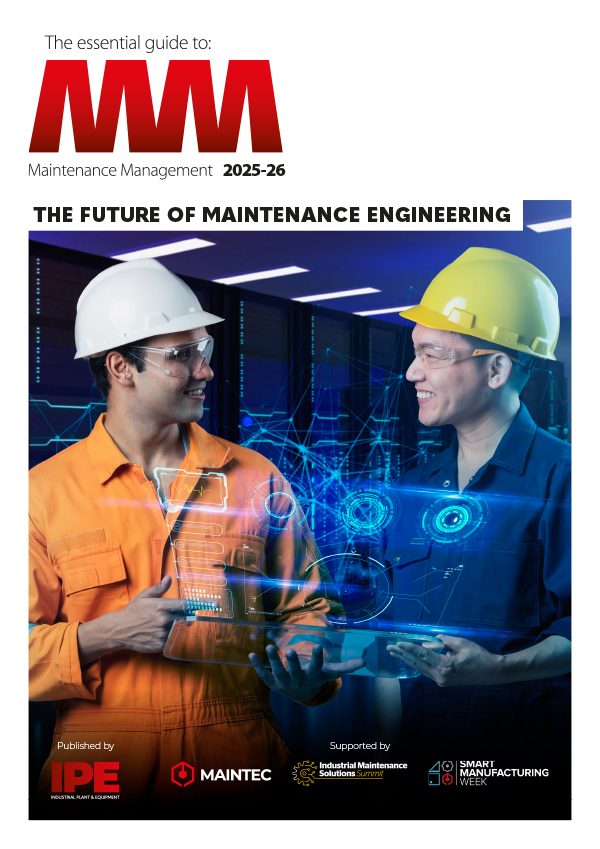In engineering, the materials that are hardest to work with are often the ones you want most in your design and Inconel is no exception. However, Inconel’s greatest strengths can also be its biggest challenges, particularly when it comes to shaping and machining it into functional components, explains Ben Kitson
INCONEL IS a family of nickel-chromium superalloys that you’ll often hear in conversations about extreme engineering environments. Thanks to its ability to withstand high temperatures, corrosion and pressure, this material is ideal for demanding applications.
This is particularly the case in the energy sector, where thermal efficiency, chemical resilience and long-term material stability are non-negotiable. Whether it’s for hydrogen, for example, Inconel is relied on to keep systems running safely under intense operational loads.
So, what exactly makes Inconel so special, but so difficult to work with? Well, Inconel is all about performance under pressure. Variants like Inconel 600, 625, 718 and X-750 are engineered to maintain their strength and structural integrity in conditions that would overwhelm most metals.
Whether it’s exposure to high temperatures, aggressive chemicals or both, Inconel resists corrosion and creep with great efficiency. This makes it ideal for components used in heat exchanger plates and fuel cell hardware - quite simply, anywhere where reliability is critical and failure isn’t an option.
In the energy sector specifically, this includes roles in hydrogen electrolysers, nuclear fuel assemblies and high-pressure thermal systems that demand precision and zero margin for error.
The associated challenges
Of course, performance comes at a cost, especially during the manufacturing process. The very qualities that make Inconel such a valuable material also make it extremely difficult to machine.
It work-hardens rapidly, meaning it becomes tougher the more you try to cut it. This increases tool wear, slows production and drives up costs. It also retains heat, which can lead to excessive temperatures during machining, further damaging tools and risking dimensional inaccuracies.
This isn’t a problem unique to Inconel. Some of the most notoriously difficult materials to machine are high-performance alloys like Inconel itself, Haynes 188, titanium alloys and tungsten carbide.
These materials are all valued for their exceptional strength, high-temperature resistance and ability to maintain their properties under stress, but that same resilience makes them incredibly stubborn when it comes to cutting or shaping with conventional methods.
The challenge becomes even greater when dealing with thin-gauge parts or intricate geometries. Traditional machining methods can introduce stress to the component, as well as distortion or surface defects, compromising its integrity or performance.
This is especially problematic in energy systems, where safety, flow efficiency and material reliability are directly linked to performance outcomes — and regulatory compliance.
For instance, in hydrogen fuel cell stacks, any defect or distortion in a flow plate can disrupt hydrogen distribution and reduce cell efficiency. In more severe cases, it can even lead to catastrophic system failure.
The best approach
This is why alternative manufacturing methods, such as photochemical machining (PCM), known as chemical etching, are gaining ground. Unlike conventional machining, etching is a non-contact, ambient-temperature process that selectively removes metal using acid-based chemistries.
When tailored to suit high-performance alloys like Inconel, etching can produce intricate components with tight tolerances and clean edges, all without inducing mechanical stress or altering the material’s properties.
What’s more, because it doesn’t rely on hard tooling or heat-intensive processes, chemical etching is especially effective for high-precision, thin-gauge parts — such as those found in compact heat exchangers, hydrogen reformers or fuel cell plates within advanced power systems.
It’s a great example of how the right manufacturing approach can turn a tricky material like Inconel into a real advantage. In modern engineering, Inconel isn’t just renowned for handling extremes, it’s also a reminder that sometimes the toughest materials can lead to the most advanced and reliable solutions — if you choose the right approach.
For more information on chemical etching, download Precision Micro’s latest whitepaper here.
Ben Kitson is head of business development at chemical etching specialist at Precision Micro
For more information:
www.precisionmicro.com
Tel: +44 (0) 121 380 0100






















